

Fly through of the GAMA Galaxy Catalogue from ICRAR on Vimeo.
The Galaxy and Mass Assembly catalogue is a detailed map of the Universe showing where galaxies are in 3D. This simulated flythrough shows the real positions and images of the galaxies that have been mapped so far. Distances are to scale, but the galaxy images have been enlarged for your viewing pleasure.
Credit: Made by Will Parr, Dr. Mark Swinbank and Dr. Peder Norberg (Durham University) using data from the SDSS and the GAMA surveys. This work was supported by the Ogden Trust, STFC and the Royal Society.


CREDIT: SPACE.COM
Infographic: The nearest stars, their distances in light-years, spectral types and known planets.

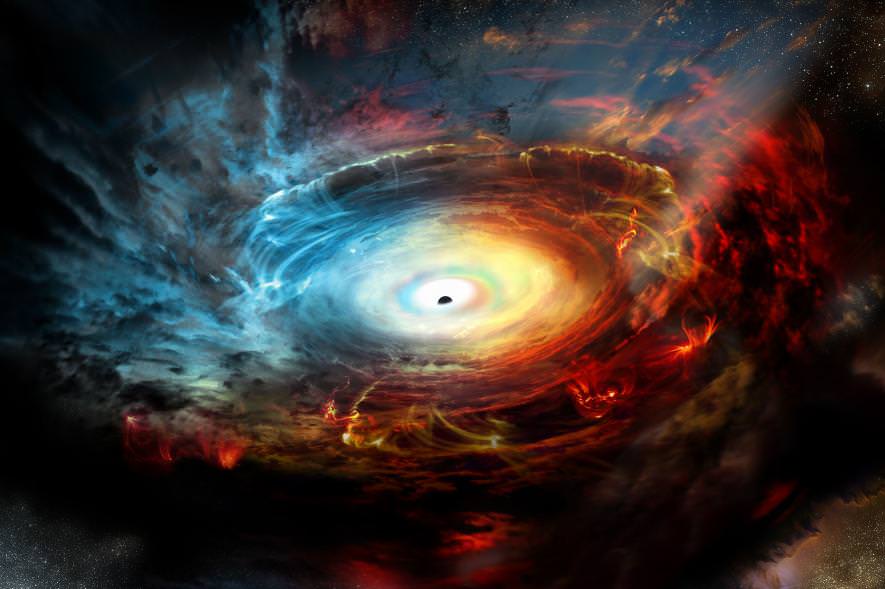
Artist's conception of a Black Hole In the course of looking for possible signs of Extra-Terrestrial Intelligence (ETI), scientists have had to do some really outside-of-the-box thinking. Since it is a foregone conclusion that many ETIs would be older and more technologically advanced than humanity, those engaged in the Search for Extra-Terrestrial Intelligence (SETI) have to consider what a more advanced species would be doing.
Black Hole Powered Warp Drive - Starship An AsteronX Concept Did you know that all black holes explode, immediately? That is, from a certain internal point of view... Creating and extracting energy from synthetic black holes: But first, the prerequisites. There is a relatively recent theory known as the Planck star theory, derived from Loop Quantum Gravity, in which gravity and spacetime are quantized—a topic for another video. It was developed to solve an outstanding problem with our understanding of black holes. You see, according to Einstein’s unmodified Relativity, when matter or energy falls into a black hole, all of its properties, its nature, everything about the infalling stuff, is lost, as a black hole is described by only three properties, its mass, electromagnetic charge, and angular momentum – no mention of the infalling stuff. However, this violates the principle of conservation of information, that states all information must be conserved. When two or more entities merge, they share properties or information – one effects the other – hence the outstanding problem. Somehow there must be a mechanism by which information is conserved. This then raises the question, how is information conferred/conserved? What is the mechanism by which information is conferred to another entity, whatever exactly the information is. The Planck star theory solves both the problem of information-loss, and the problem of i nfinite density at the black hole’s singularity. The theory basically states that when a black hole forms, as matter and energy compress ever further - at the very moment the core reaches critical density, specifically, the Planck energy density – a repulsive - opposing force from within the core, preventing the black hole - all of its mass and energy from reaching the Planck scale – halting its collapse. This repulsive force forms an inner horizon, whilst the powerful gravitational well forms the outer horizon or the event horizon. When the two horizons meet – the inner expands and the outer contracts – the black hole briefly becomes a white hole and explodes, spewing forth all its mass and energy – fueled by this repulsive force, which of course means that it had to overcome the powerful gravitational field – i.e. the gravitational well. And more... Credits and Thank You to the following! Our assume patrons! NASA for use of their videos: Wikipedia for use of their information and images: Steven Hawking – Wikimedia: Loop Quantum Gravity: Hawking radiation: Super massive black holes:
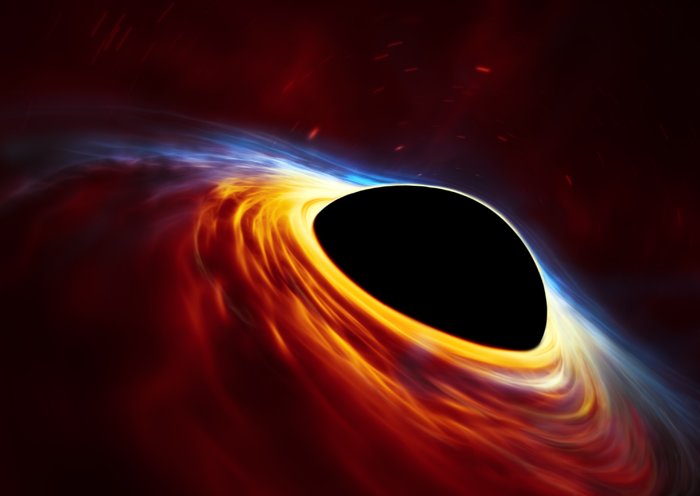
Researchers at WSU have created a fluid with a negative effective mass for the first time, which could open the door to studying the deeper mysteries of the Universe. Credit: ESA/Hubble, ESO, M. Kornmesse
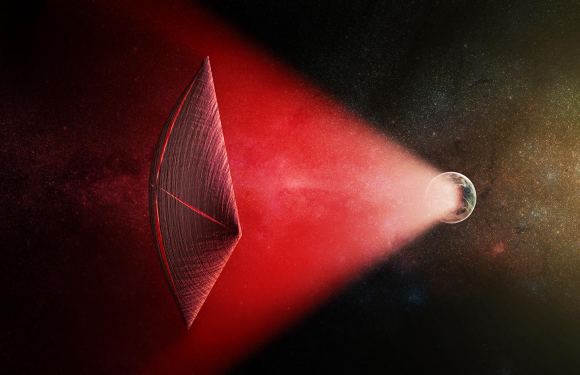
An artist’s illustration of a light-sail powered by a directed-energy beam (red) generated on the surface of a planet. The leakage from such beams as they sweep across the sky would appear as errant flashes and indicating the possible existence of an ETI. Credit: M. Weiss/CfA
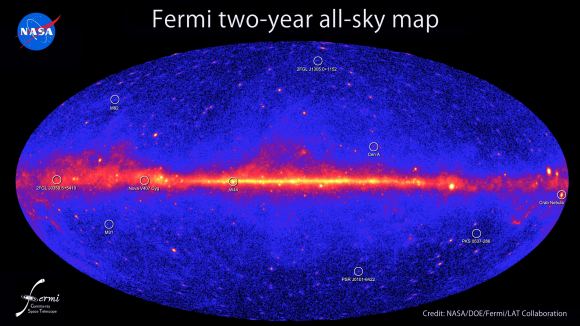
Fermi Second catalog of Gamma Ray Sources, constructed over two years and released in 2011. Credit: NASA/DOE/Fermi LAT Collaboration
A continuing look at possible technologies using artificial Black Holes as power sources, focusing on spaceship concepts, as well as the impact on SETI. In this video we will examine the basic concept, as well as refueling black holes, using black holes as weapons, and several related concepts. Previous episodes on Micro-Black Holes: Support the Channel on Patreon:(ISAAC ARTHUR) Listen or Download the audio of this episode from Soundcloud: Original Crane-Westmoreland 2009 paper(PDF)
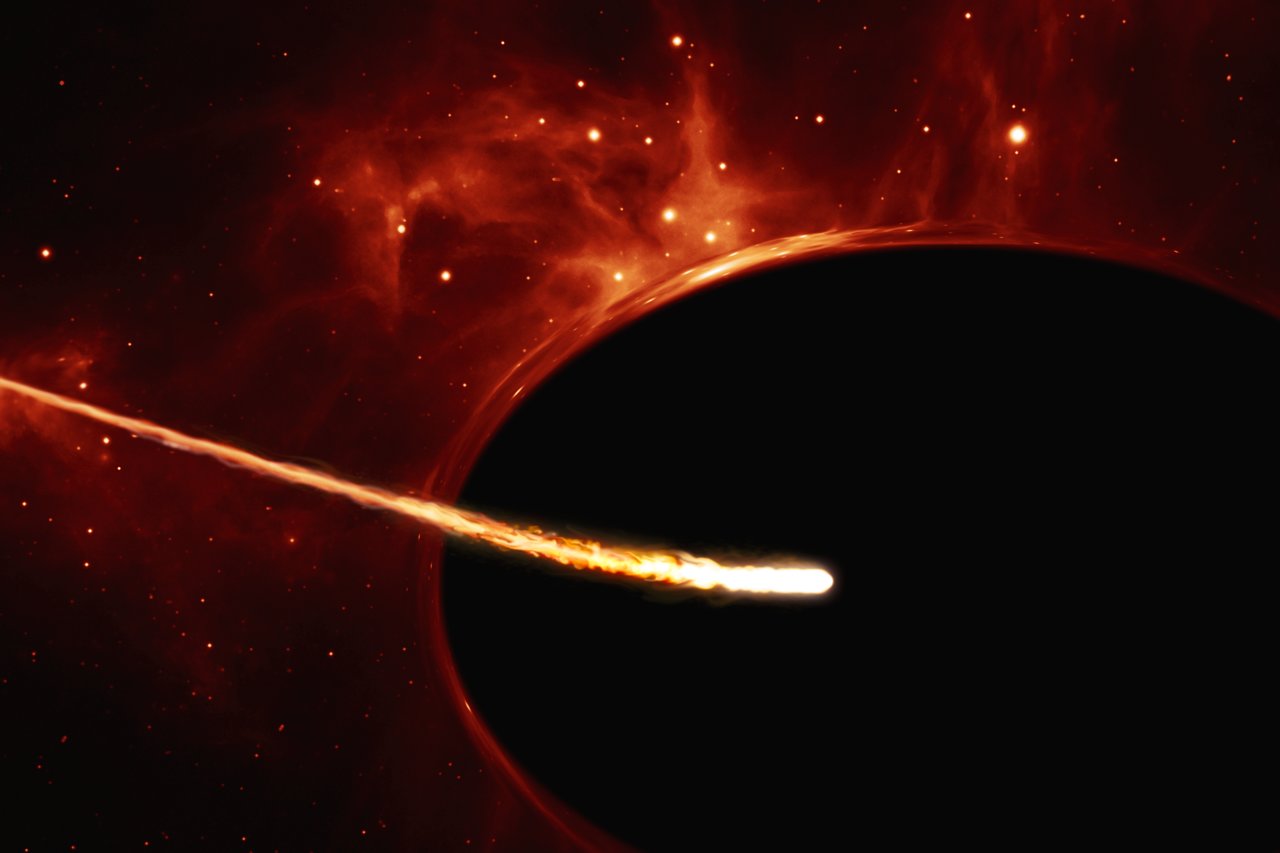
The idea of one day traveling to another star system and seeing what is there has been the fevered dream of people long before the first rockets and astronauts were sent to space. But despite all the progress we have made since the beginning of the Space Age, interstellar travel remains just that – a fevered dream. While theoretical concepts have been proposed, the issues of cost, travel time and fuel remain highly problematic.
Presented by Professor David Kipping Further reading and resources: ► Kipping, David (2018), "The Halo Drive: Fuel Free Relativistic Propulsion of Large Mases via Recycled Boomerang Photons", JBIS, In Press: ► Dyson, Freeman (1963), "Gravitational Machines", in A.G.W. Cameron, ed., Interstellar Communication, New York Benjamin Press:(PDF) ► Breakthrough Starshot homepage: ► Our Cool Worlds video giving some background on Breakthrough Starshot: ► Our Cool Worlds video on relativistic moving mirrors: ► Our Cool Worlds video on mirror distortion effects: ► Columbia University Department of Astronomy: ► Cool Worlds Lab website: * There’s an error in the video at around 8:30, 2 trillion joules is the cumulative energy output of a typical nuclear power station after 2000 seconds, not 20 days Music is largely by Chris Zabriskie and is licensed under a Creative Commons Attribution license in order of appearance; ► Cylinder Five ► Music from Neptune Flux, "We Were Never Meant to Live Here" ► Music from Neptune Flux, "That Hopeful Future Is All I've Ever Known" ► Cylinder Four ► The Sun is S cheduled to Come Out Tomorrow In addition, music from OneGuitarOrchestra, acoustic cover of Hans Zimmer's "No Time For Caution": Video materials used: ► Several NASA videos, in particular from the Voyager 1 and New Horizons missions ► Several ESO videos, in particular of TRAPPIST-1 and LIGO merger animations, ► Breakthrough Starshot animation from Breakthrough Initiatives Films clips used: ► Interstellar ::Playlists For Channel:: ►Latest Cool Worlds Videos ► Cool Worlds Research ► Guest Videos ► Q&A Videos ► Tabby's Star ► Science of TV/Film ::Follow us:: SUBSCRIBE to the channel Cool Worlds Lab Twitter THANKS FOR WATCHING!!
Music in this video Learn more Listen ad-free with YouTube Premium Song Woad To Ruin (Score) Artist Hans Zimmer Licensed to YouTube by UMG (on behalf of Hollywood Records); PEDL, ASCAP, UMPI, LatinAutor, LatinAutor - UMPG, AMRA, Walt Disney Music Company (Publishing), LatinAutor - Warner Chappell, and 17 Music Rights Societies Song Budget meeting Artist Hans Zimmer Album King Arthur Writers Hans Zimmer Licensed to YouTube by UMG, WMG (on behalf of Buena Vista Music Group); Warner Chappell, LatinAutor, LatinAutor - UMPG, PEDL, Walt Disney Music Company (Publishing), UMPI, LatinAutor - Warner Chappell, and 14 Music Rights Societies Song Another Brick In Hadrian's Wall (Score) Artist Hans Zimmer Licensed to YouTube by UMG (on behalf of Hollywood Records); LatinAutor - UMPG, LatinAutor - Warner Chappell, UMPI, ASCAP, PEDL, AMRA, LatinAutor, Warner Chappell, Walt Disney Music Company (Publishing), and 13 Music Rights Societies
Fraser Cain Published on Jul 28, 2014 Have you ever heard that spacecraft can speed themselves up by performing gravitational slingshot maneuvers? What's involved to get yourself going faster across the Solar System. Category Science & Technology
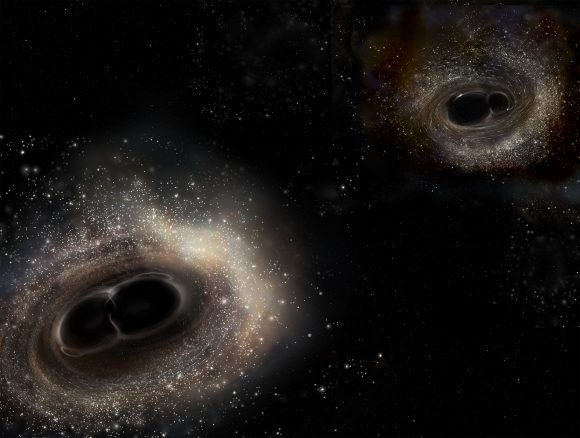
Artist’s impression of merging binary black holes. Credit: LIGO/A. Simonnet.
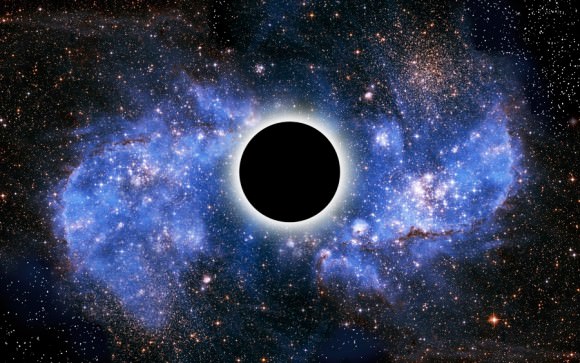
Artist’s conception of the event horizon of a black hole. Credit: Victor de Schwanberg/Science Photo Library
This is a physically accurate gravitational lensing visualization of the last few orbits of a binary black hole merger. The camera is roughly in the orbital plane of the merger. The mass ratio is 3 to 1. The large black hole has a dimensionless spin of 0.7, whereas the small hole's dimensionless spin is 0.3, with both spins in arbitrary directions. This is case 4 of Phys. Rev. D, 88:124010, Dec 2013,1309.3605. Another view of this merger can be seen here: A video of the apparent horizons of this binary can be found here: This binary exhibits precession of the orbital plane, which can be seen in this video. More information about this system and lensing of the system can be found in "What would a binary black hole merger look like?(PDF) This movie was created by SXS Lensing, of the Simulating eXtreme Spacetimes (SXS) collaboration, Data from the 2MASS catalog was used in the generation of this movie.

The Hubble captured this image of NGC 6052 A and B in December 2015 with its Wide Field Planetary Camera 2 (WFPC2.)
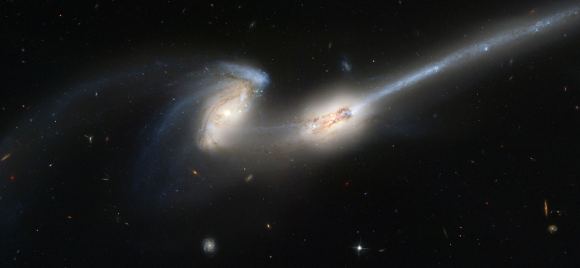
The Mice galaxies (NGC 4676 A&B) are 300 million light years away. This image of the merging pair was captured with the Hubble’s Advanced Camera for Surveys (ACS.) They’re nicknamed Mice because of their long streaming tails of stars, shaped by the gravitational interactions. Image Credit: By NASA, H. Ford (JHU), G. Illingworth (UCSC/LO), M.Clampin (STScI), G. Hartig (STScI), the ACS Science Team, and ESA – APOD 2004-06-12, Public Domain, https://commons.wikimedia.org/w/index.php?curid=539276
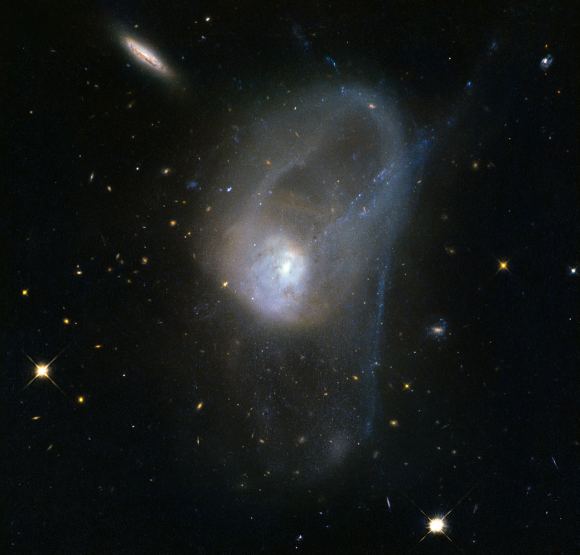
There aren’t many merging galaxies close enough to study in detail, but NGC 3921 is one of them. It’s only 270 million light years away. Image Credit: By ESA/Hubble, CC BY 4.0, NGC 3921 is close enough to study, and in 1997, the Hubble’s WFPC2 caught a burst of activity at the heart of the merging galaxies.
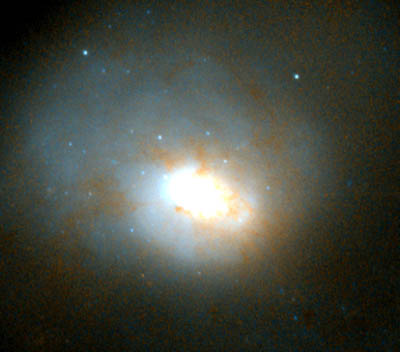
The bright core of NGC 3921, where 1,000 clusters of new young stars have burst into life as a result of the merger. Image Credit: NASA/ESA/B. Whitmore (STScI)